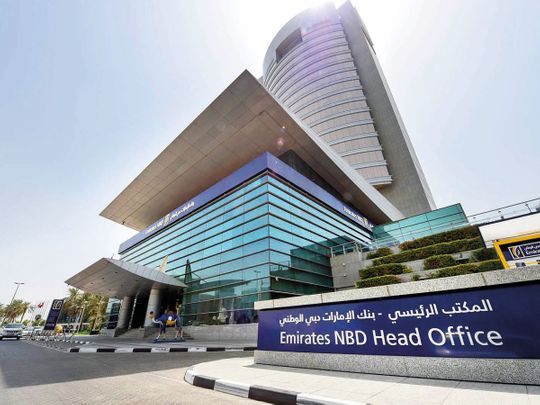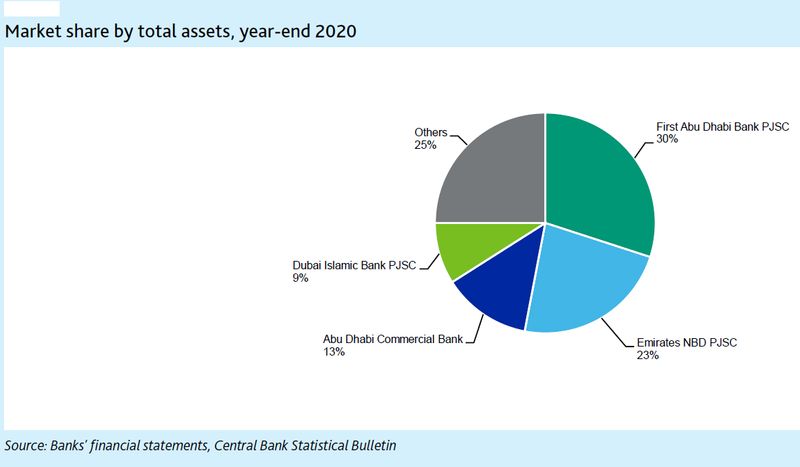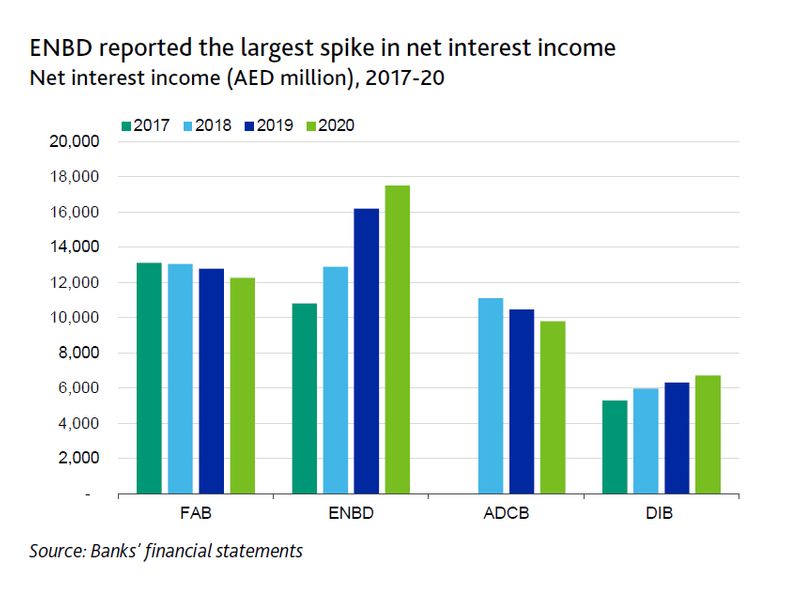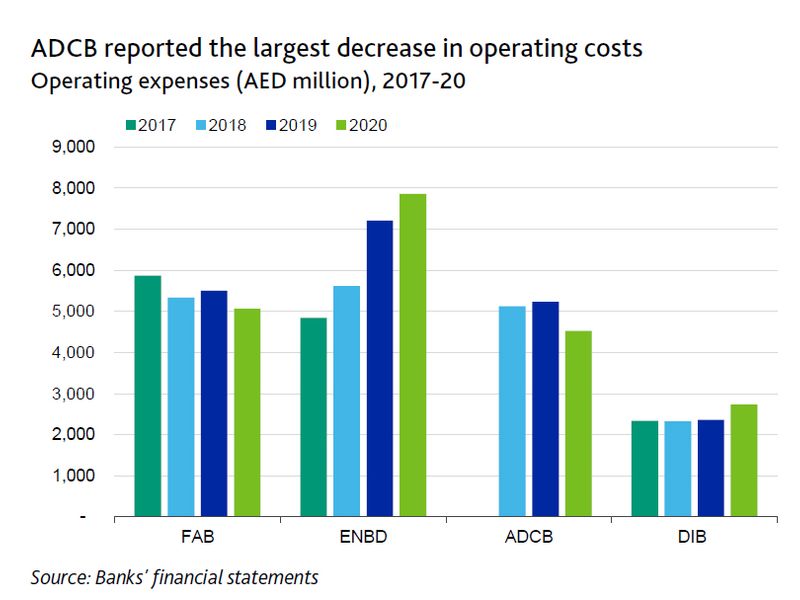
Dubai: The four largest bank in the UAE saw sharp drop in their net profit in 2020, but the decline is manageable according rating agency Moody’s.
Top four banks such as First Abu Dhabi Bank (FAB) Emirates NBD (ENBD), Abu Dhabi Commercial Bank (ADCB) and Dubai Islamic Bank (DIB) accounted for 76 per cent of UAE banking assets at end-December 2020 witnessed 35 per cent fall in profit to $6.7 billion in 2020 from $10.2 billion in 2019.

“The decline reflects high loan-loss provisions related to the pandemic, lower interest rates and a non-recurring gain in 2019 at ENBD that made for a harsher than normal comparison,” said Francesca Paolino, an analyst at Moody’s Investors Service.
The absence this year of a one-off $1.2 billion gain at ENBD reported in 2019 related to the partial disposal of a stake in Network International too was a big factor in sharp decline in the combined net profits of the big four.
Fall in interest income
All four banks reported a double-digit drop in net profit driven by decline in interest incomes, rise in provisions and absence of one-off gains.

Moody’s sees although the big four reported rise of combined net interest income by1 per cent largely driven by acquisitions by two banks (of Noor Bank by DIB and Denizbank by ENBD), excluding the impact of these net interest income dropped 8 per cent due to declining margins driven by lower interest rates. Excluding acquisitions, the combined loan book of top four banks contracted by 2 per cent and net interest income dropped by 8 per cent.
“This loan book decline was mainly driven by large corporate loan repayments versus low retail and corporate segment growth,” said Nitish Bhojnagarwala, VP – Senior Credit officer at Moody’s.
Although the pressure on net interest income, their main revenue source, will persist through 2021, reflecting prolonged low interest rates, the impact of this will be softened by higher lending volumes as coronavirus-related restrictions ease and the vaccination rollout helps lower infection rates.
The top four banks’ combined Basel III core Tier 1 capital stood at 16.4 per cent of risk-weighted assets (RWAs) at the end of 2020. Earnings retention and Tier 1 bond issuances outweighed dividend payouts and the dilutive effect of higher risk-weighted assets.
Lower non-interest income
Moody’s said non-interest income declined due to lower income from fee-based activities, investment securities and market trading. The four banks’ aggregate non-interest income fell by 10 per cent during 2020.
“This negative trend was led by weaker trading volumes, fewer fee-generating transactions, and lower income from investment securities,” said Paolino.
Excluding DIB and Denizbank at ENBD, the largest three banks’ combined non-interest income dropped by 14 per cent. Non-interest income at the four large banks contributed 27 per cent to their combined operating income.
Flat costs with some divergence
The four banks’ maintained their strong cost-efficiency. Combined operating expenses were flat year on year, although the trend differed noticeably between banks, as cost-cutting and merger synergies offset digital and acquisition costs.
The big four’s cost-to-income ratio was 31.7 per cent from 31.2 per cent in 2019. Excluding the recent acquisitions, costs fell overall. There was however divergence between the banks in costs.

DIB reported the largest increase in operating costs (up 16 per cent), largely due to the acquisition of Noor Bank in January 2020 and digital investment expenses. Operating costs also rose at ENBD but by 9 per cent, mainly reflecting the inclusion of Denizbank. Excluding Denizbank, costs fell 6 per cent driven by the implementation of cost efficiencies initiatives.
Higher provisions
Loan-loss provisions surged due to pandemic-related economic challenges. Aggregate provisions increased by 72 per cent, mainly driven by higher problem loans and anticipation of higher loan losses ahead.
“Despite significant rise in provisions in 2020, the coverage ratio declined to 86 per cent from 99 per cent at year-end 2019 and we expect further higher provisioning during 2021 as asset quality deteriorates,” Paolino.








